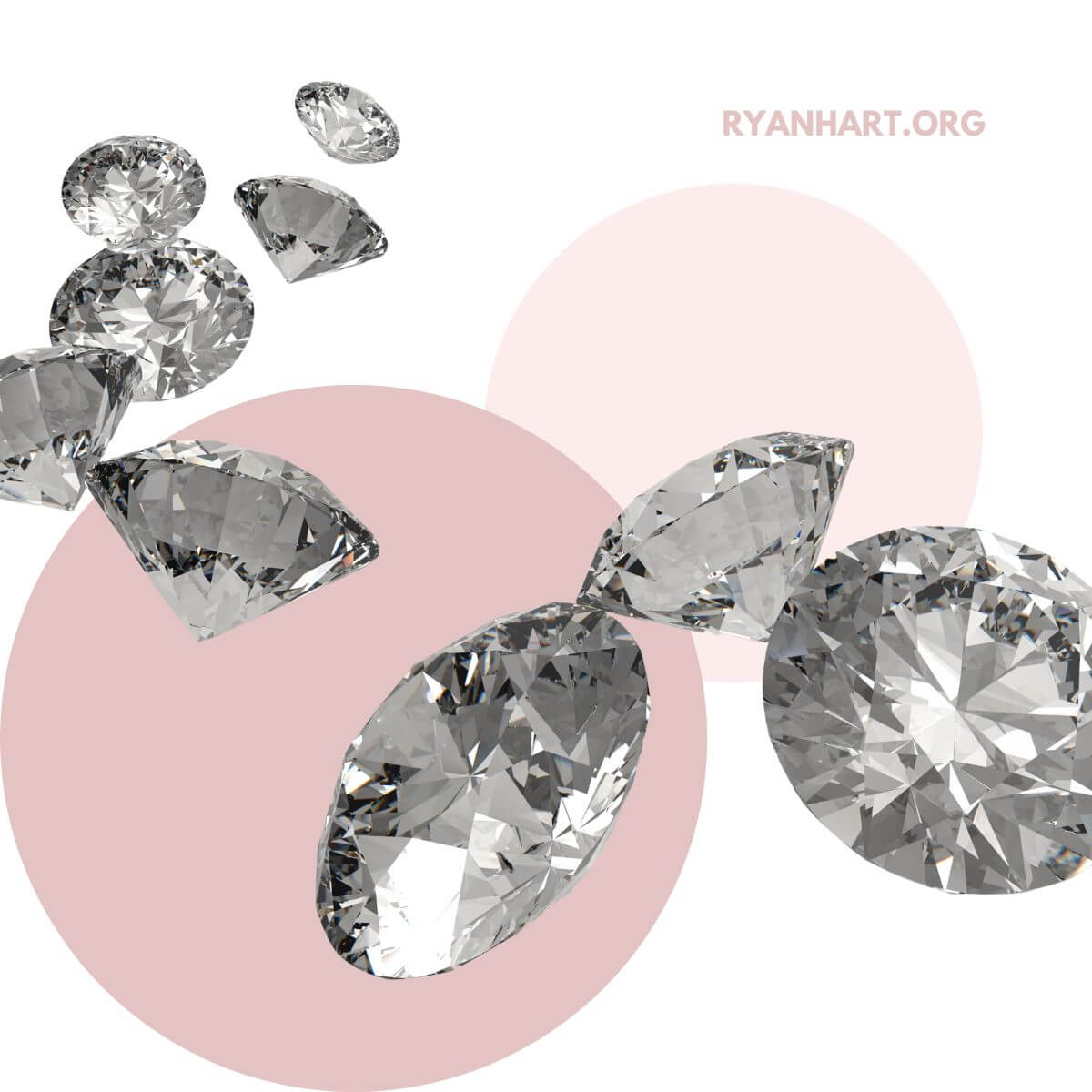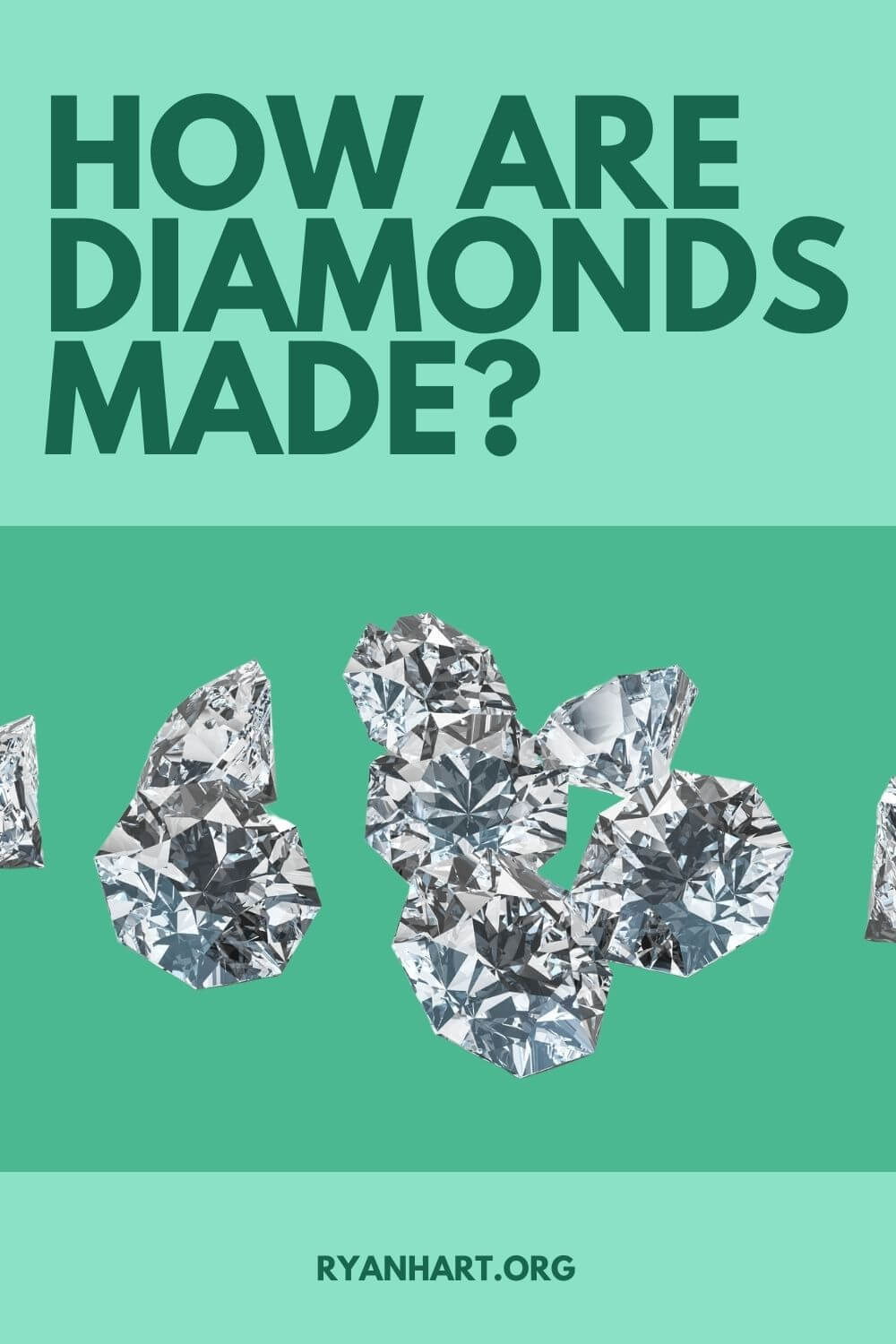How are Diamonds Made? Naturally Formed vs Lab-Grown
by Ryan Hart | Updated on September 19, 2023 | Post may contain affiliate links. As an Amazon Associate we earn from qualifying purchases.
Diamonds are formed from carbon and subjected to intense heat and pressure. The result is a beautiful, sparkling gemstone that is treasured worldwide.
In this article, you’ll learn the fascinating process of diamond creation and why they are such a coveted commodity. Plus, you’ll discover the different types of diamonds and their unique properties.
Keep reading to discover how diamonds are made!

How are diamonds formed in the Earth?
Diamonds are one of the world’s most popular gemstones. They are incredibly durable, possess unsurpassed brilliance, and have a wide range of colors.
But how are these beautiful stones made?
Most diamonds are formed deep within the Earth’s mantle, where high temperatures and pressures transform carbon-containing materials into diamonds. This process typically takes place over millions of years.
In some cases, however, diamonds can be formed much more quickly by meteorites striking the Earth’s surface. These impact events instantly generate enough heat and pressure to turn carbon-bearing materials into diamonds.
In either case, the resulting diamonds are typically found in kimberlite or lamproite pipes. When magma from deep within the Earth’s mantle rises to the surface and cools, these pipes are formed.
Over time, the magma erodes surrounding rock, leaving behind a column of diamond-bearing material. Kimberlite pipes are much more common than lamproite pipes, and as a result, most diamonds mined today come from kimberlite deposits.
How are lab-grown diamonds made?
Lab-grown diamonds are created using two methods: high pressure, high temperature (HPHT), or chemical vapor deposition (CVD).
Both processes involve heating carbon to extremely high temperatures until it forms a diamond crystal.
While lab-grown diamonds have identical physical and chemical properties as natural diamonds, they are often sold at a fraction of the price. As a result, lab-grown diamonds have become increasingly popular in recent years.
High-Pressure High-Temperature
The majority of lab-grown diamonds are created using a process called high-pressure, high-temperature (HPHT) synthesis. In this method, diamond seeds are placed in a chamber with carbon-rich material and then subjected to extreme pressure and heat.
Over time, the seeds grow into full-sized diamonds. HPHT synthesis is the most common method for creating lab-grown diamonds; manufacturers can use it to create diamonds of all colors and sizes.
Lab-grown diamonds typically have the same physical and chemical properties as natural diamonds, making them just as tough and durable. However, they are often cheaper than natural diamonds because they do not need to be mined from the Earth.
As a result, lab-grown diamonds have become a popular choice for engagement rings and other fine jewelry.
Chemical Vapor Deposition
CVD stands for chemical vapor deposition, a process manufacturers can use to create lab-grown diamonds.
The first step is placing a small piece of diamond seed material inside a sealed chamber, then introducing a gas into the chamber and breaking it into atomic carbon.
This carbon then begins to attach itself to the surface of the diamond seed, slowly building up over time. Once the diamond has reached the desired size, the chamber is cooled, and the finished diamond is removed.
CVD is just one of several methods laboratories can use to create artificial diamonds, and it has many benefits.
It is a relatively simple process manufacturers use to create diamonds of any size or shape, with results that are chemically identical to natural diamonds.
What are diamonds made from?
Diamonds are formed when carbon is subjected to extreme heat and pressure over time. This synthesis can happen naturally, as in the case of volcanic eruptions, or laboratories can do it artificially.
The result is the same: a beautiful, precious diamond.
Interestingly, there are two types of diamonds: natural and lab-grown. Natural diamonds are the ones that form over time deep within the Earth’s crust, while synthetic diamonds are manufactured using cutting-edge technology.
And while both types of diamonds may look the same to the naked eye, they have some distinct differences.
For instance, natural diamonds are usually more expensive than synthetic ones because there is a much smaller supply available.
Additionally, natural diamonds often have minor flaws or “imperfections,” which some people see as part of their unique charm. On the other hand, synthetic diamonds are perfect in every way since they were created in a lab.
Where do diamonds come from?
Diamonds are actually found in many different locations around the globe.
The vast majority of diamonds are mined in African countries like Botswana, Namibia, and South Africa, but there are also significant diamond deposits in Russia, Australia, Canada, and India.
Most diamonds form deep within the Earth’s mantle under extreme heat and pressure conditions. Diamond deposits are brought to the surface by volcanic activity and can end up almost anywhere in the world.
For example, some diamonds are found in riverbeds or on beaches, as they have been carried there by erosion. Others reside in kimberlite pipes, which are ancient volcanic formations.
And yet others are mined from alluvial deposits, which are gravel beds that have been formed by the movement of water over time.
Do diamonds come from coal?
Many believe diamonds are formed from coal, but this is not true. Most diamonds are formed deep within the Earth’s mantle, far below the planet’s surface.
The extreme pressure and heat at these depths cause carbon atoms to bond, creating a diamond’s crystalline structure.
Over time, these diamonds are pushed towards the surface by geological activity, and they can eventually be mined and cut into the sparkling gemstones that we know and love.
So next time someone asks you where diamonds come from, you can tell them that they come from deep within the Earth’s mantle - not from coal!
How long does it take a diamond to form?
Deep within the Earth’s mantle, a diamond is formed over a long period. The process begins when a tiny seed crystal, known as a nucleus, is formed from carbon-bearing materials.
Pressure and heat then cause the surrounding material to crystallize around the nucleus, forming a rough diamond slowly.
Generally, a diamond takes 1 to 3.3 billion years to form. However, many factors can affect the formation time, including the type of diamond, the temperature and pressure conditions within the Earth, and the presence of impurities. As a result, there is significant variation in formation times for different diamonds.
Once the diamond has been formed, it may be forced to the surface by volcanic activity. However, most diamonds remain buried deep within the Earth until humans discover them.
Bottom Line

Diamonds have been prized for their beauty and durability for centuries. In addition to being attractive, diamonds are the hardest known natural material.
This combination of qualities makes diamonds an ideal material for various applications, from earrings and engagement rings to industrial cutting tools.
The unique properties of diamonds are primarily due to their carbon atomic structure. Under high pressure and temperature, carbon atoms form into a three-dimensional lattice, creating a material that is both extremely strong and exceptionally heat resistant.
It is this combination of qualities that makes diamonds so unique.